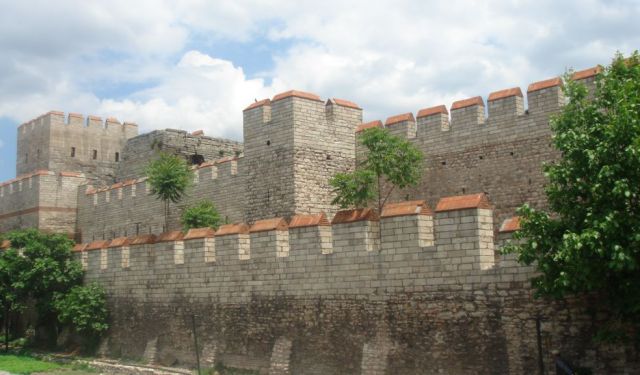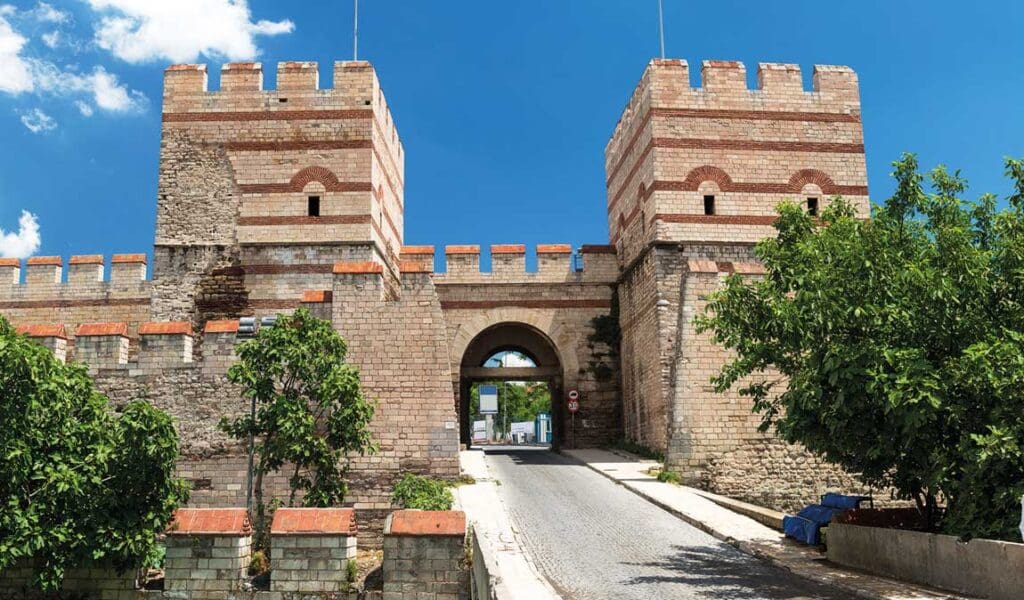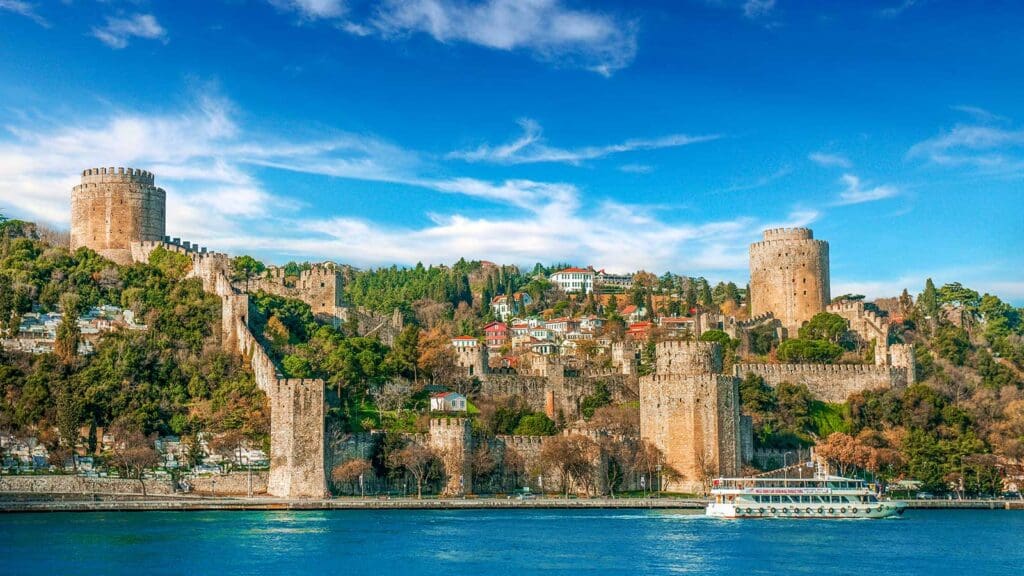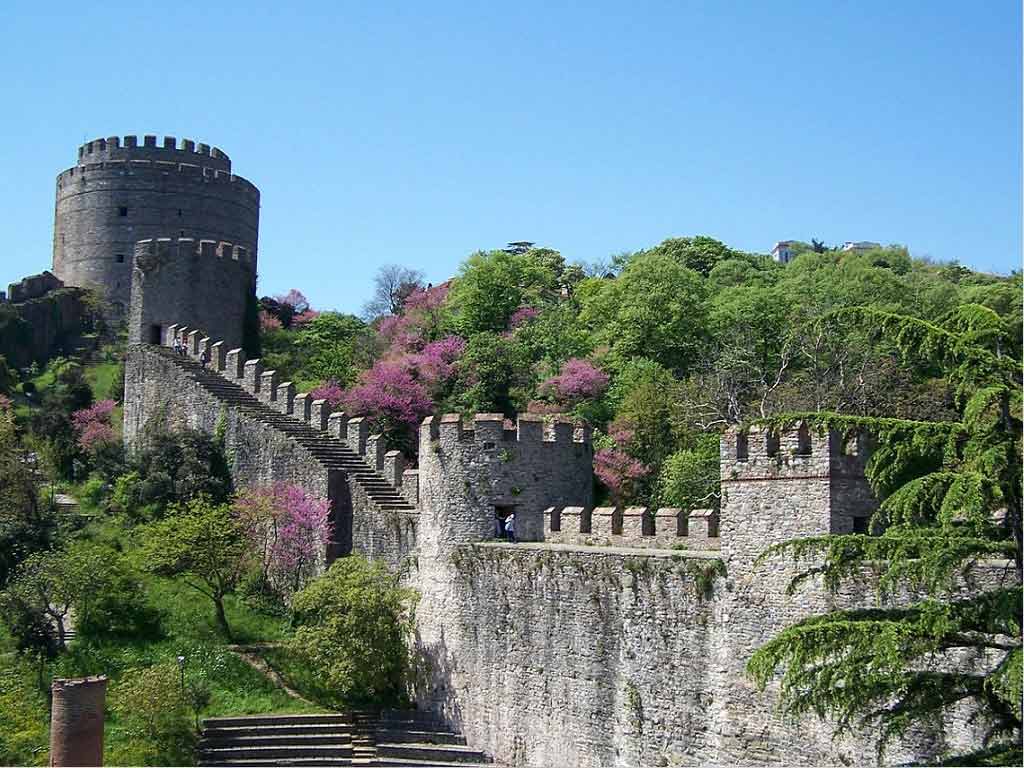
The city of Istanbul, rich in history and culture, is known for its magnificent walls that once protected the ancient city of Constantinople. These Istanbul walls have witnessed countless historical events and have stood the test of time. In this article, we will delve into the fascinating history of the walls of Istanbul, exploring their construction, significance, and the tales they hold.
Table of Contents
The Origins of the Walls
Byzantium: The Predecessor of Constantinople
Before it was known as Constantinople, the city was called Byzantium. Established as a Greek colony in the 7th century BC, Byzantium’s strategic location at the crossroads of Europe and Asia made it a highly coveted city. It was an ideal spot for trade and military advantage, which eventually led to its rise as the capital of the Eastern Roman Empire, known as the Byzantine Empire. The transformation from Byzantium to Constantinople occurred when Emperor Constantine the Great refounded the city in AD 330, marking a new era in its illustrious history.
The Vision of Constantine the Great
Emperor Constantine the Great was instrumental in the initial construction of the city walls, recognizing the need for fortified defenses to protect the burgeoning city. His vision extended beyond military might, as he sought to create a city that reflected the grandeur of the Roman Empire. He initiated the first set of walls, which set the groundwork for future expansions and fortifications. Constantine’s foresight established Constantinople as a bastion of strength and resilience, influencing its development for centuries.

Theodosius II and the Expansion of the Walls
While Constantine laid the foundation, it was Emperor Theodosius II who significantly expanded and fortified the walls in the 5th century. This expansion was driven by the growing threats from neighboring regions and the need to secure the city against potential invasions. The Theodosian Walls were an architectural marvel, reflecting the advanced engineering skills of the time. These fortifications were not only a means of protection but also a symbol of the empire’s might and ingenuity, solidifying Constantinople’s status as an impenetrable fortress.
Structure and Design
The Engineering Marvel of Theodosian Walls
The Theodosian Walls were an impressive feat of engineering, showcasing the ingenuity and skill of ancient builders. Constructed as a double-wall system with a moat in front, they were designed to withstand both human and natural threats. The outer wall, approximately 8 meters high, was complemented by an imposing inner wall standing at 12 meters. Towers strategically placed at regular intervals along the walls provided critical vantage points for defenders, allowing for effective surveillance and defense against would-be invaders.

The Triple Line of Defense
One of the most remarkable features of the Theodosian Walls was their triple line of defense. This consisted of a deep moat, an outer wall, and a formidable inner wall, creating a virtually impregnable barrier. The moat was designed to deter attackers and slow their advance, while the outer wall offered initial resistance. The inner wall, with its robust construction, served as the final line of defense, ensuring the city’s safety even under the most relentless assaults. This multi-layered system was a testament to the strategic foresight of its architects and the importance placed on the city’s security.
Construction Techniques and Materials
The construction of the Theodosian Walls was a testament to the advanced techniques and materials used by ancient builders. Limestone blocks and brickwork were meticulously combined to create walls that were both strong and durable. The use of these materials not only provided structural integrity but also allowed for repairs and modifications over time. The walls’ design incorporated architectural principles that maximized defense capabilities, reflecting a deep understanding of both engineering and military strategy.
The Significance of the Walls
Symbols of Strength and Resilience
The walls of Istanbul were more than mere physical barriers; they were enduring symbols of the city’s strength and resilience. They protected Constantinople from numerous invasions, preserving the heart of the Byzantine Empire for centuries. As emblems of power and stability, the walls played a crucial role in maintaining the city’s status as a cultural, economic, and military hub. Their presence was a constant reminder of the empire’s formidable might and the determination of its people to defend their home.
The Pivotal Role in Byzantine Defense
Throughout history, the walls of Constantinople played a pivotal role in the defense of the Byzantine Empire. They thwarted numerous sieges and attacks from diverse foes, including the Avars, Arabs, and Bulgars. The walls’ strategic design and robust construction allowed the city to withstand prolonged assaults, often outlasting the resources and morale of invading forces. This resilience was a key factor in the empire’s survival, enabling it to flourish even amidst external threats and internal challenges.

The Fall of Constantinople and the Rise of the Ottomans
Despite their formidable strength, the walls eventually succumbed during the Ottoman conquest of Constantinople in 1453. The introduction of gunpowder and cannons by the Ottomans rendered the once-impenetrable walls vulnerable to modern warfare. The fall of Constantinople marked the end of the Byzantine Empire and the beginning of a new era under Ottoman rule. This pivotal event reshaped the region’s political landscape and signaled a shift in power dynamics, underscoring the evolving nature of warfare and defense.
The Walls Today
A Journey Through Time
Today, the walls of Istanbul stand as a testament to the city’s storied past, offering visitors a unique journey through time. While some sections have been restored to their former glory, others remain in ruins, bearing silent witness to the passage of centuries. Walking along these ancient fortifications, visitors can imagine the battles fought and the history that unfolded within these walls. Each stone and tower tells a story of resilience, courage, and the enduring spirit of those who once stood guard over the city.
Efforts in Preservation and Restoration
Efforts to preserve and restore the walls of Istanbul are ongoing, driven by a commitment to maintaining their historical and cultural significance. These initiatives aim to protect the walls from the ravages of time and modern development, ensuring that future generations can appreciate their legacy. Restoration projects seek to balance the preservation of authenticity with the need for structural stability, allowing the walls to continue serving as a link to the past while adapting to contemporary demands.

The Legacy of the Walls
The legacy of the walls of Istanbul extends beyond their physical presence, encapsulating the resilience and ingenuity of the people who built and defended them. They serve as a reminder of the city’s rich history and its role as a crossroads of cultures and civilizations. As architectural marvels, the walls inspire awe and admiration, inviting exploration and reflection. Whether you’re a history enthusiast, a curious traveler, or a local resident, the walls offer a captivating journey through time, connecting us with the stories of those who once walked their length.
Conclusion
The walls of Istanbul are more than just stone and mortar; they are a testament to the city’s rich history and enduring spirit. From their construction in ancient times to their role in shaping the course of history, the walls have witnessed the rise and fall of empires. As you explore the walls of Istanbul, you are not just walking through history, but also connecting with the stories of those who once stood behind these mighty fortifications.
In understanding the walls of Istanbul, we gain a deeper appreciation for the resilience and ingenuity of those who built and defended them. Whether you’re a history enthusiast or a curious traveler, the walls of Istanbul offer a captivating journey through time. They embody the spirit of a city that has stood the test of time, inviting us to explore its past and ponder its future.
1. What are the Walls of Istanbul?
The Walls of Istanbul, also known as the Walls of Constantinople, are ancient defensive stone walls that once protected the city from invaders.
2. When were the walls built?
The original walls were built by Constantine the Great in the 4th century, with major expansions during Theodosius II’s reign in the 5th century.
3. Where are the walls located?
They stretch from the Golden Horn to the Sea of Marmara, forming a defensive line along the western edge of the old city.
4. Can visitors walk along the walls?
Yes, some sections are accessible to visitors. You can walk alongside them or even climb parts near Yedikule Fortress and Topkapı.
5. Is there an entrance fee to visit the walls?
Most of the wall sections are free to visit. However, Yedikule Fortress, which is part of the walls, may charge a small entrance fee.
6. Are guided tours available?
Yes, guided tours are available and provide historical context and stories from Byzantine and Ottoman times.
7. What is Yedikule Fortress?
Yedikule (Seven Towers) Fortress is a historic fortification built into the walls. It served as both a ceremonial gate and a prison.
8. Are the walls well preserved?
Some sections are in excellent condition, while others are partially ruined. Restoration work has been done in recent years.
9. How long are the walls?
The Theodosian walls stretch for about 5.5 kilometers (3.4 miles) and were one of the most formidable defenses in medieval history.
10. What’s the best way to get there?
You can reach the walls by tram, metro, or bus. Stops near Topkapı, Edirnekapı, or Yedikule give good access to different parts.
11. What’s the best time to visit the Istanbul Walls?
The best time to visit is during the spring and autumn months, as the weather is pleasant for walking, and crowds are fewer.
12. Can I take pictures near the walls?
Yes, photography is allowed around most sections of the walls, but be mindful of local rules if visiting areas like Yedikule Fortress.
13. What is the historical significance of the walls?
The walls are a symbol of the Byzantine Empire’s strength and were crucial in the defense of Constantinople for over a thousand years.
14. Are there any events or festivals near the walls?
Occasionally, there are cultural events, concerts, or reenactments held near the walls, especially in areas like Yedikule Fortress.
15. Is there parking near the walls?
Yes, there are parking areas around popular spots like Yedikule Fortress and Edirnekapı, though they can be limited in busy times.
16. Are the walls wheelchair accessible?
Access can be challenging for people with mobility issues, especially on the uneven stone surfaces of the walls, but some areas like Yedikule are more accessible.
17. What should I bring when visiting the walls?
Wear comfortable shoes, as some areas involve walking on uneven ground. Bring a hat or sunscreen for sunny days, and a camera for photos!
18. Are there any restaurants or cafes near the walls?
Yes, you’ll find local cafes and restaurants near areas like Edirnekapı or Yedikule, where you can relax after exploring the walls.
19. Can I visit the walls during the night?
The walls themselves are generally not open at night, but you can admire their beauty from outside, especially in the areas around Yedikule.
20. What are some other attractions near the Istanbul Walls?
Nearby attractions include Topkapı Palace, Chora Church, and Süleymaniye Mosque, all offering a rich historical experience.

